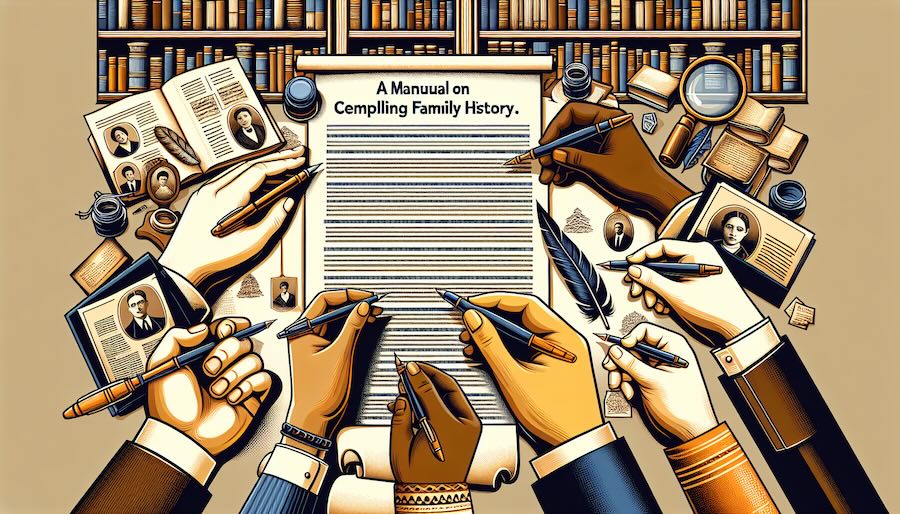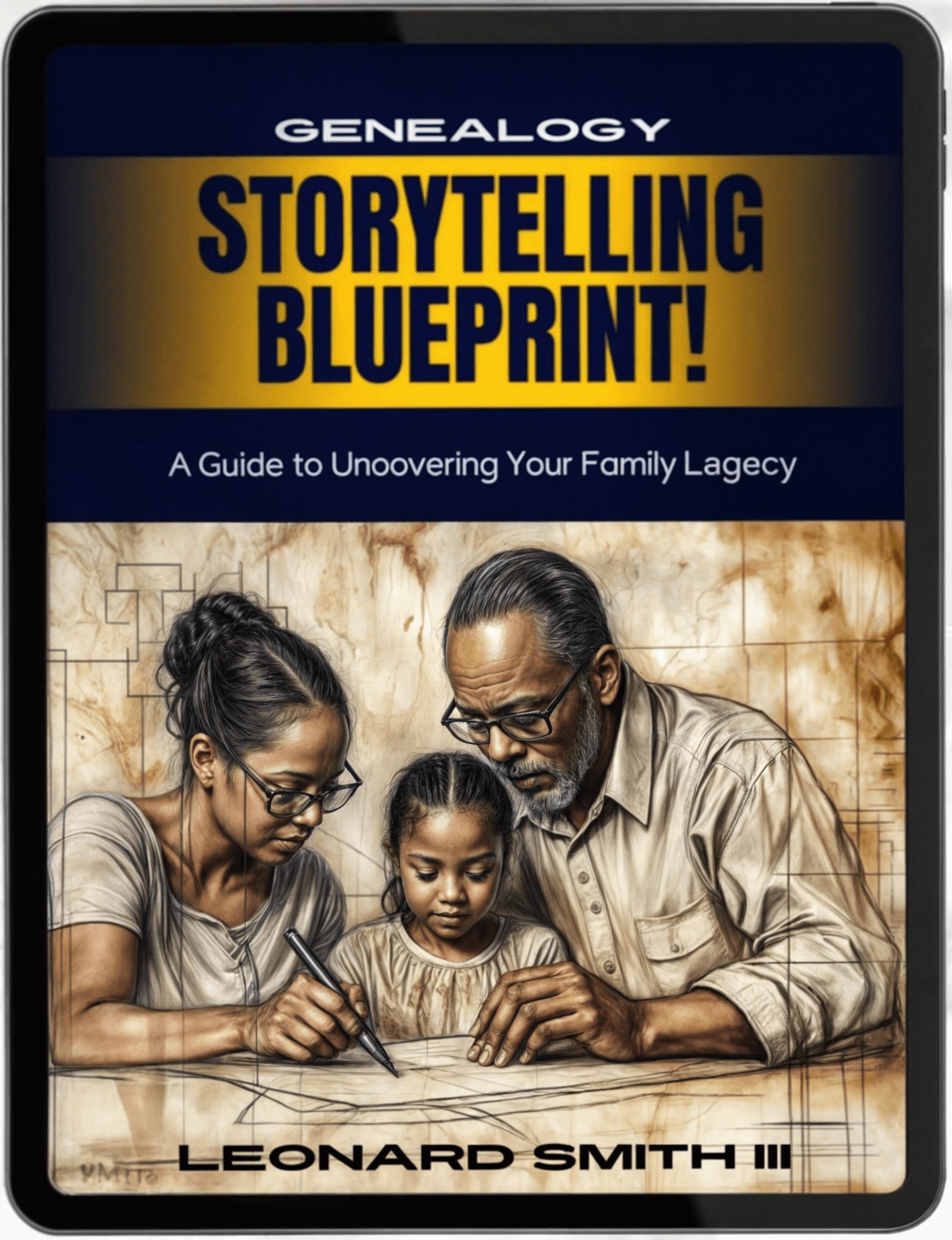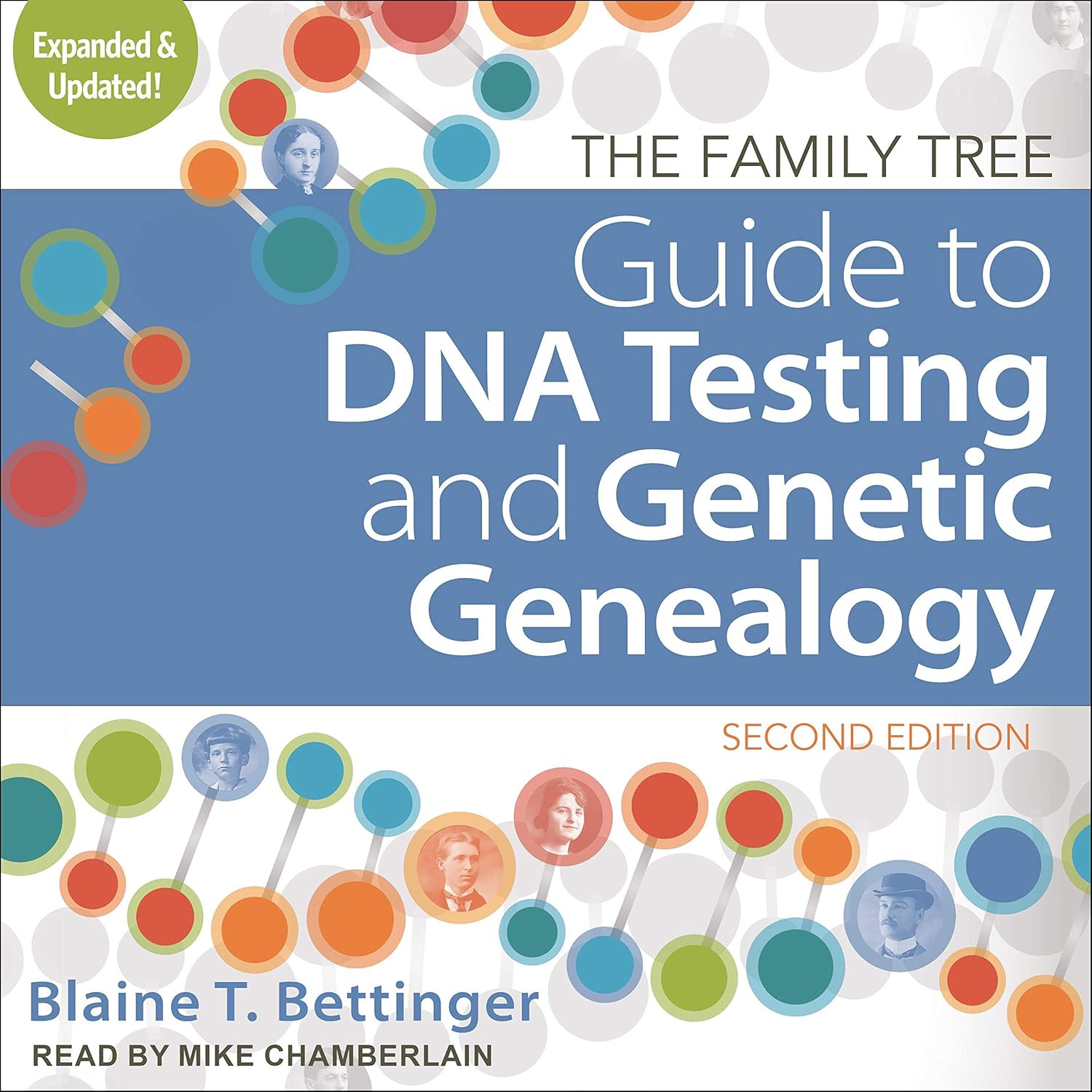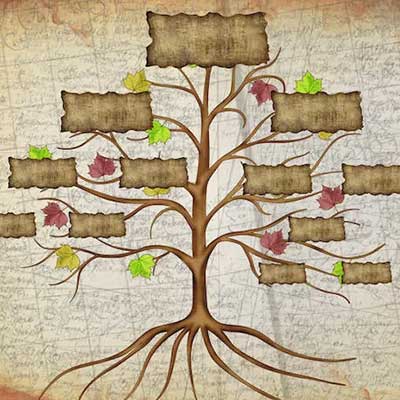- Home
- Importance of Family Storytelling
- Write Your Family History
Write Your Family History
Write your family history is an enriching journey to preserve their legacy. This article will guide you on crafting a compelling narrative about your family's past. It will transform fragmented memories into a cohesive story, from gathering documents and information to weaving in personal anecdotes. Get ready to embark on a journey of discovery and learn the art on how to write your family history.
Select Your Approach
There are many ways to write your family history. It's essential to select the method that you feel most comfortable with, whether it is a research-based one, an interview approach or you rely on your own experience.
Research
The research is an integral part of a family history. You must explore archives, libraries, and online resources to learn more about your ancestors. You can learn more about your ancestors' lives by examining birth certificates, census data, and marriage records.
Interviews
Interviewing family members is a rewarding experience. You can connect with family members, learn their stories and collect personal anecdotes. You can learn about different generations and family traditions by conducting structured interviews.
Personal Experience
When writing your family's history, you can use your experiences and memories as a resource. Reflecting on upbringing, culture, and relationships with family can give your story a unique perspective. Your readers can relate more deeply if you share your experiences.
Gather Information
After you've chosen an approach, the next step is to collect information to build a solid base for your family history.
Collect Documents
Collecting relevant documents is the first step in gathering information. Birth certificates, marriage licenses, obituaries, and immigration records are some documents that provide essential details about your ancestors. Compile a collection of documents that will support your family's history.
Contact Family Members
Could you contact family members to tap into their expertise and resources? They may have documents or stories to add to your family's history. You can enrich your family history research by involving relatives.
Use Online Resources to Write Your Family History
Use online resources to improve your research and discover hidden information. Ancestry.com and FamilySearch.org provide you with access to large databases and tools for organizing your findings. Use these resources to increase your knowledge and collect details that will help bring your family's history to life.
Organize Your Findings
After gathering so much information, I think organizing your findings logically and coherently is important.
Create a Timeline
A timeline is the foundation of your family's history. You can create a narrative structure by arranging events chronologically. This will give readers a better sense of history. Begin with the oldest known ancestor and then progress through the generations by weaving in stories and experiences from subsequent generations. This chronological framework makes it easy to understand and follow your family's history.
Group Information by Generation
Organizing your findings according to generations can help establish a clear family lineage and highlight the relationships between family members. You can create a coherent structure by grouping the information into generations. This will allow readers to understand family dynamics better and trace their lineage. You can also identify patterns and similarities between generations by using this approach.
Genealogy software is a great way to keep track of your family history
Use genealogy software to organize and manage your research. Software like Legacy Family Tree Ancestral Quest and Gramps have features that make it easier to create family trees, record relationships, and preserve data. These tools simplify the organization of information and provide a visual representation.
Tell a Compelling story
It's important to tell an engaging story to captivate your readers and make the family history you write genuinely captivating.
Introduce Yourself With a Captivating Introduction
You can start your family history by grabbing the reader's interest. It could be a fascinating anecdote or family legend. Or it could be a unique part of your family journey. Could you set the scene for your narrative and capture the interest of your readers?
Include Relevant Historical Context
Understanding your ancestors' lives requires historical context. To give your readers a broader perspective, could you weave relevant historical events into the stories of family members? You can help readers understand your family members' challenges and opportunities by highlighting social, political, or cultural conditions during different times.
Highlights of Personal Anecdotes
Anecdotes from your own life can bring your family's history to life and help readers feel connected. These personal anecdotes can add authenticity and depth to your narrative, whether it is a funny story about the cooking mishaps of great-grandma or a heartwarming tale of resilience in difficult times. These personal anecdotes humanize your ancestors, making them relatable to all readers.
Include Relevant Details When You Write Your Family History
Incorporating specific details into your family history is crucial to creating a vivid image of your ancestors.
Names and Dates
The foundation of any family tree is accurate names and dates. To avoid confusion, include the full name, including any middle names or initials. Include dates of marriage, birth, and death to create a timeline and establish lineage.
Work and Education
I'd like you to please discover information about the professions of your ancestors and their educational background to understand their lifestyles and aspirations better. Discovering their educational and career achievements can provide valuable insight into their lives and the opportunities they had at that time.
Immigration and Migration
Understanding migration patterns and immigration is essential to tracing your family's journey. Investigate the reasons for their migration: economic opportunity, religious persecution, or political instability. These journeys will add depth to the family history of your ancestors and reveal their resilience and determination.
Capture the Social Context
To truly understand your family's history, you should explore the social environment in which they lived.
Explore Cultural Backgrounds
Explore the cultural backgrounds of ancestors and discover their traditions, values, and customs. Understanding their culture will help you tell a more holistic story that embraces their unique identity and celebrates the diversity of your own family.
Investigate Socioeconomic Factors
Examine socioeconomic factors such as your family's social class, their economic status, and the resources they had access to. You can better understand the challenges and opportunities your family faces by exploring these factors.
Analyze Family Traditions
Families have many vital traditions that can reveal values and beliefs handed down from generation to generation. Investigate your family's traditions and rituals related to holidays, festivals, or daily life. Share these family traditions to preserve your cultural heritage and create a sense of belonging for future generations.
Add Supporting Images When You Write Your Family History
Add images to your family history to help readers better understand your ancestors.
Photos and Portraits
Include photos and portraits to help put faces to names. These visual representations make your family history come alive, allowing readers to connect more personally with distant relatives. Find family photo albums and digitize old photos. Collect current family portraits.
Maps and Locations
Include maps and geographical locations to show the migrations and movements of your ancestors. You can evoke a feeling of place and context by identifying ancestral hometowns, migration paths, and significant places. Maps help readers understand their ancestors' distances, challenges, and journeys.
Important Documents
Include scans or photos of important documents such as birth certificates and marriage licenses. These primary documents are tangible proof of your ancestors’ lives and add credibility to the family history. Be sure to cite these primary documents correctly to maintain the integrity of your family history research.
Proofread and Edit
Take the time to edit and proofread your work before finalizing it.
Check for Accuracy
Verify the accuracy of information by comparing different sources. Even minor mistakes can impact the credibility of your family tree. To ensure accuracy, double-check dates, names, and any other facts.
Ensure Consistency
Keep your writing style, formatting, and citations consistent throughout the family history. Consistency is critical to creating a polished and professional final product. Please review your work and ensure it flows smoothly from section to section.
Clarity and Flow Editing
It's essential to edit your family history so it flows and is easily read. Please read your work to find awkward phrases or confusing passages. You might want someone else to read your work so they can provide a fresh perspective and spot any mistakes or areas needing improvement.
Ethics Concerns
Treating ethical issues with respect and sensitivity when writing about your family is crucial.
Respect Privacy
When sharing personal information, respect the privacy of family members who are still alive. Before sharing details about living family members, get their consent. Some may want to keep some aspects of their life private. It is essential to balance the desire to tell your family's history with the need to protect individual privacy.
Topics That are Controversial and Sensitive
Be sensitive to controversial and sensitive topics. Some family histories reveal difficult or painful stories. Consider how such issues will affect readers, and especially family members. Be objective and compassionate while honoring the experience of all those involved.
Include Multiple Perspectives
Recognize that family history is made up of many perspectives. Include different perspectives, conflicting memories, and accounts of past events to create a comprehensive and nuanced narrative. You can create a more accurate and inclusive representation of your family story by including multiple perspectives.
Share and Preserve Your Work
After you've completed your family history project, think about the best way to share your work and preserve it for future generations.
Publication Options
Explore the different options for publishing your family history to make it accessible to others. You can self-publish your book in print, submit it to a journal of a genealogical organization, or create digital e-books and PDFs. Consider the pros and cons for each option, and then choose the one that best suits your goal of sharing your family's story.
How to Create a Family Website
A family website is a great way to share your family's history. You can include documents, photos, and stories while connecting with distant family members. Create a platform that is easy to navigate and promotes engagement and collaboration among family members.
Digitizing and Archiving Material
Digitize important documents, photos, and other materials and archive them to ensure long-term preservation. Consider using cloud storage, external drives, or websites designed specifically for genealogical searches. Digitizing and archiving materials will allow future generations to enjoy and access your work.
It is a labor-of-love that connects present and future generations to their roots. You can create an engaging and comprehensive narrative by following these steps. Enjoy the journey, embrace your discoveries and cherish the connections that you make along the way. Enjoy your writing!
















